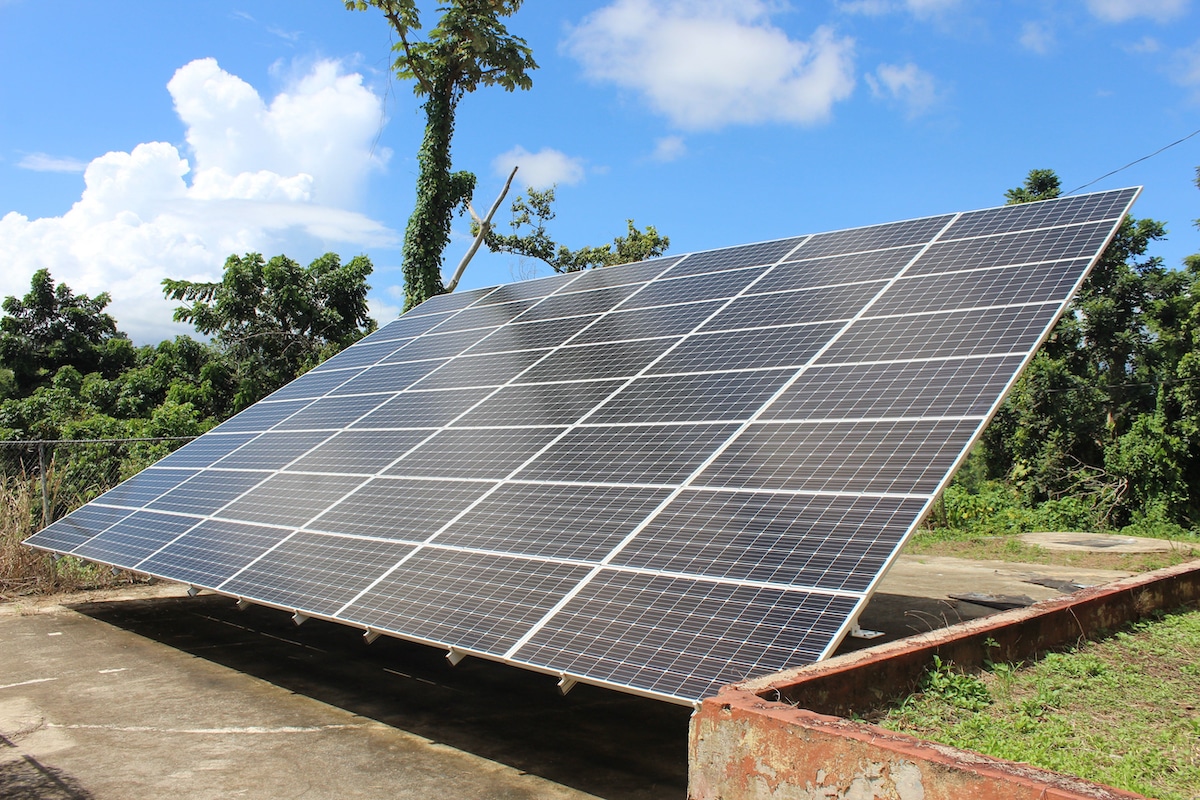Distributed Renewables Are Cheaper, More Reliable for Puerto Rico, Study Finds

 Why you can trust us
Why you can trust us
Founded in 2005 as an Ohio-based environmental newspaper, EcoWatch is a digital platform dedicated to publishing quality, science-based content on environmental issues, causes, and solutions.
Dramatically expanding rooftop solar and battery storage is necessary for Puerto Rico to meet its renewable energy goals and doing so would make the territory’s grid more reliable, resilient, and affordable, a new DOE and FEMA report says.
Despite the island’s obvious solar and wind energy potential, 97% of its power generation comes from fossil fuels. Distributed renewables can help keep lights and refrigerators on after major storms — as they did after Hurricane Fiona last September — and actually cost less to build than Puerto Rico’s troubled, “existing fossil fuel capacity” costs to operate.
During a DOE webinar on Monday, many Puerto Rican residents raised concerns about individual affordability, highlighting the need for broader renewables investment. “We want to have a solar community, but there is (no) program available for us!” Wanda Ríos wrote during the webinar.
As reported by The San Juan Daily Star:
The two-year study found that there is not sufficient land available on the island for wind-power infrastructure to meet the 100% goal and Puerto Rico should instead install solar infrastructure on sites such as brownfields, industrial areas and airports.
The study estimated that Puerto Rico’s energy transmission system can bear the projected renewables growth over the next five to 15 years but that further grid upgrades will be necessary in the longer term, particularly for wind power.
—
Puerto Rico has higher electricity costs than any U.S. state except Hawaii, which the EIA attributes to its reliance on fossil fuels. The preliminary report estimated installing new renewable energy sources would be more cost-effective than maintaining the existing system and in terms of operating costs is already on track to be more cost-effective by 2025.
For a deeper dive:
AP, E&E, The San Juan Daily Star, NPR, Politico Pro, The Hill, Fox News
For more climate change and clean energy news, you can follow Climate Nexus on Twitter and Facebook, sign up for daily Hot News, and visit their news site, Nexus Media News.
Subscribe to get exclusive updates in our daily newsletter!
By signing up, you agree to the Terms of Use and Privacy Policy & to receive electronic communications from EcoWatch Media Group, which may include marketing promotions, advertisements and sponsored content.

 233k
233k  41k
41k  Subscribe
Subscribe 



